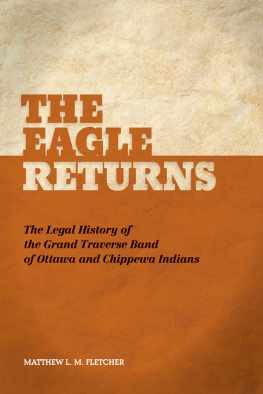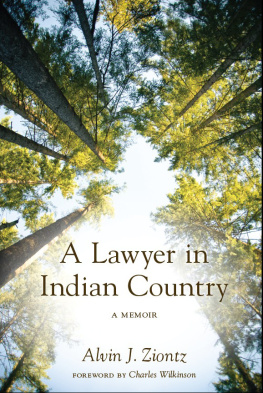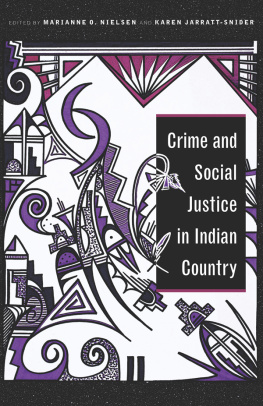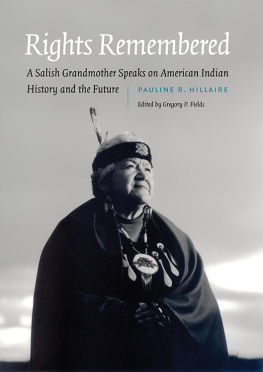AFTERWORD
Carcieri v. Salazar and the Band's Future Land Base
In 2009, the United States Supreme Court handed down its decision in Carcieri v. Salazar a case involving the authority of the secretary of the Interior to acquire land in trust for the Narragansett Tribe in Rhode Island. Unfortunately, the Court's decision indirectly implicated the authority of the secretary to take land into trust for a host of Michigan Indian tribes, including the Grand Traverse Band. The Court held that the secretary may not take land into trust for Indian tribes that were not under federal jurisdiction at the time Congress enacted the Indian Reorganization Act1934. The Grand Traverse Band, along with seven other Michigan tribes, and perhaps upwards of a hundred other Indian tribes nationally, did not enjoy federal recognition in 1934.
The Grand Traverse Band had been following the case since at least 2003, when the State of Rhode Island under its governor Donald Carcieri appealed a trial court decision to the federal First Circuit Court of Appeals. The band has been a contributor to the Tribal Supreme Court Project, a group formed by numerous Indian tribes and administered by the Native American Rights Fund and the National Congress of American Indians. The First Circuit hears very few Indian law cases, and so the band authorized its attorneys to participate in the case as amicus curiae to present the views of the Grand Traverse Band.
The ultimate question revolved around Section 5 of the Indian Reorganizatio but were forced to agree to state jurisdiction over their reservation lands as a result.
The federal government (then represented by Interior Secretary Gale Norton) argued, along with the Tribal Supreme Court Project and various Indian tribes (including the Grand Traverse Band), that the definition of now meant at the time of the secretary's decision to take land into trust, not at the time of the enactment of the Indian Reorganization Act. In fact, the Department of the Interior's interpretation of Section 5 had held steady for over seventy years, and in too many instances to count, it had taken land into trust for Indian tribes not federally recognized in 1934.
The First Circuit heard the case twiceonce in a normal three-judge panel,
Over the objections of the federal government, the Supreme Court decided to hear the state's appeal, and reversed the First Circuit with an opinion by Justice Thomas. The Carcieri Court held, in essence, that now means nowas in 1934. Interestingly, the Court seemed to say that federal recognition, as is now understood, is irrelevant to whether a tribe was under federal jurisdiction in 1934. Whether a tribe was under federal jurisdiction has never been litigated, and all of the parties assumed that federal recognition stood in for federal jurisdiction. But because the decision applied only to the Narragansett Tribe, which Justice Thomas asserted was under state jurisdiction in 1934, Indian tribes and the federal government cannot be sure what under federal jurisdiction means.
The Carcieri decision was accompanied by several concurring and dissenting opinions, all of which mentioned the Grand Traverse Band in some manner. The band's history of being administratively terminated by the Department of the Interior in the 1870s, only to be administratively recognized by the department in 1980, confounded the majority's version of history. Justice Breyer, who agreed that the Narragansett Tribe was not under federal supervision in 1934, nevertheless disagreed with Justice Thomas's majority opinion that now means 1934. He relied upon the very fact that the department once terminated then recognized the Grand Traverse Band as evidence that there is no time limit on recognition.
In fact, the history of the Grand Traverse Banda treaty tribe illegally terminated by the Department of the Interior before 1934, then recognized after 1934formed a key part of the foundation of Indian Country's response to the State of Rhode Island's attack on the federal government's position. An amicus
Several months after the Carcieri decision, the chairman of the Grand Traverse Band, Derek Bailey, appeared as a witness in an important hearing before the Senate Committee on Indian Affairs regarding delays in the Department of the Interior's process for administering the fee to trust process.
A few months before Chairman Bailey's testimony, the band had delivered to the Department of the Interior a submission detailing the reasons why the band was under federal jurisdiction in 1934 in accordance with the Carcieri decision. The band's submission, titled Submission on Carcieri's Under Federal Jurisdiction Requirement in Connection with Pending Fee-To-Trust Applications, detailed the band's history as a treaty tribe.
As such, at virtually the same time as Chairman Bailey's testimony, the Department of the Interior, now operated by the Obama administration, did acquire some lands into trust for the bandabout 78 acres in Antrim County, Michigan, for housing development.
Once again, the Grand Traverse Band served as a precedent-setting tribe, proving as a practical matter the outside contours of American Indian law.
Bibliography
PRIMARY SOURCES
Cases
Adams v. Grand Traverse Band of Ottawa and Chippewa Indians Economic Development Authority, No. 89-03-001-CV (Grand Traverse Band Tribal Court, June 18, 1992), affd, No. 89-03-001-CV (Grand Traverse Band Court of Appeals, Aug. 19, 1993), amended on petition for rehg, No. 92-07-002-CV-App (Grand Traverse Band Court of Appeals, March 28, 1994)
Baird v. Norton, 226 F.3d 408 (6th Cir. 2001)
Barona Group of Capitan Grand Band of Mission Indians v. Duffy, 694 F.2d 1185 (9th Cir. 1982), cert. denied, 461 U.S. 929 (1983)
Bay Mills Indian Community v. United States, 27 Indian Claims Commission 94 (1972) (Docket No. 58)
Blatchford v. Native Village of Noatak, 501 U.S. 775 (1991)
Cabazon Band of Mission Indians v. Riverside County, 783 F.2d 900 (9th Cir. 1986)
California v. Cabazon Band of Mission Indians, 480 U.S. 202 (1987)
Carcieri v. Kempthorne, 398 F.3d 22 (1st Cir. 2005), affd, 497 F.3d 15 (1st Cir. 2007) (en banc)
Carcieri v. Salazar, 129 S. Ct. 1058 (2009), revg, 497 F.3d 15 (1st Cir. 2007) (en banc)
CETAC v. Kempthorne, 2004 WL 5238116 (D. D.C. 2004), affd, 492 F.3d 460 (D.C. Cir. 2007)
Covelo Indian Community v. Watt, 551 F. Supp. 366 (D. D.C. 1982)
Covelo Indian Community v. Watt, 1982 U.S. App. LEXIS 23138 (D.C. Cir., Dec. 21, 1982) (per curiam)
DeVerney v. Grand Traverse Band of Ottawa and Chippewa Indians, No. 96-10-201 (Grand Traverse Band Court of Appeals, Nov. 22, 1997)
Dominic v. United States, 2 Indian Claims Commission 469 (1953) (Docket Nos. 40-B et seq.)
Dominic v. United States, 2 Indian Claims Commission 461 (1953) (Docket Nos. 40-B et seq.)
Dominic v. United States, 6 Indian Claims Commission 414 (1958) (Docket No. 40-K)
Duhamel v. Mich. Dept. of Natural Resources, No. G84-1186, 1987 U.S. Dist. LEXIS 15721 (W.D. Mich., Jan. 21, 1987)
Grand Traverse Band of Ottawa and Chippewa Indians v. Director, Michigan Department of Natural Resources, 141 F.3d 635 (6th Cir. 1998)
Grand Traverse Band of Ottawa and Chippewa Indians v. Director, Michigan Department of Natural Resources, 971 F. Supp. 282 (W.D. Mich. 1995)
Grand Traverse Band of Ottawa and Chippewa Indians v. Leelanau Indians, Inc. and Leelanau County, No. 83-834 (W.D. Mich., Jan. 30, 1985)
Grand Traverse Band of Ottawa and Chippewa Indians v. Michigan Department of Natural Resources, No. 01-5784 (13th Judicial Circuit Court 2002)
Grand Traverse Band of Ottawa and Chippewa Indians v. United States Attorney for the Western District of Michigan, 369 F.3d 960 (6th Cir. 2004)






